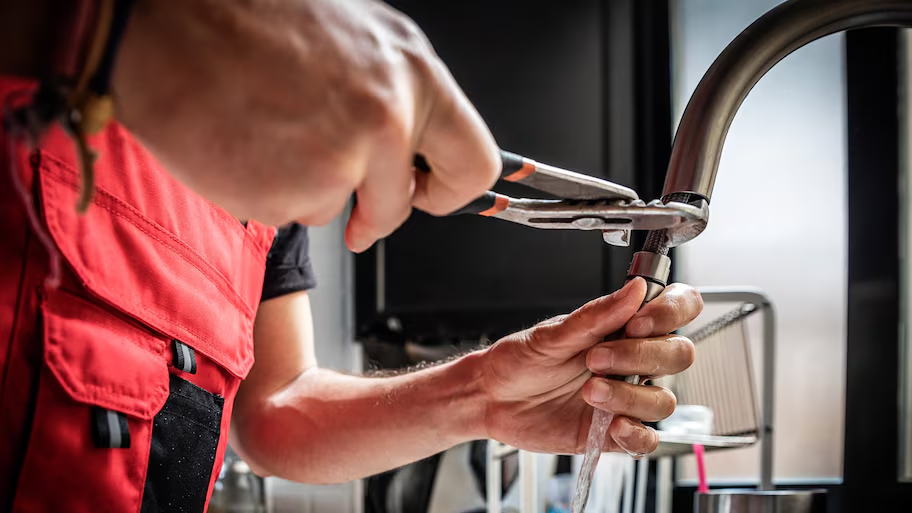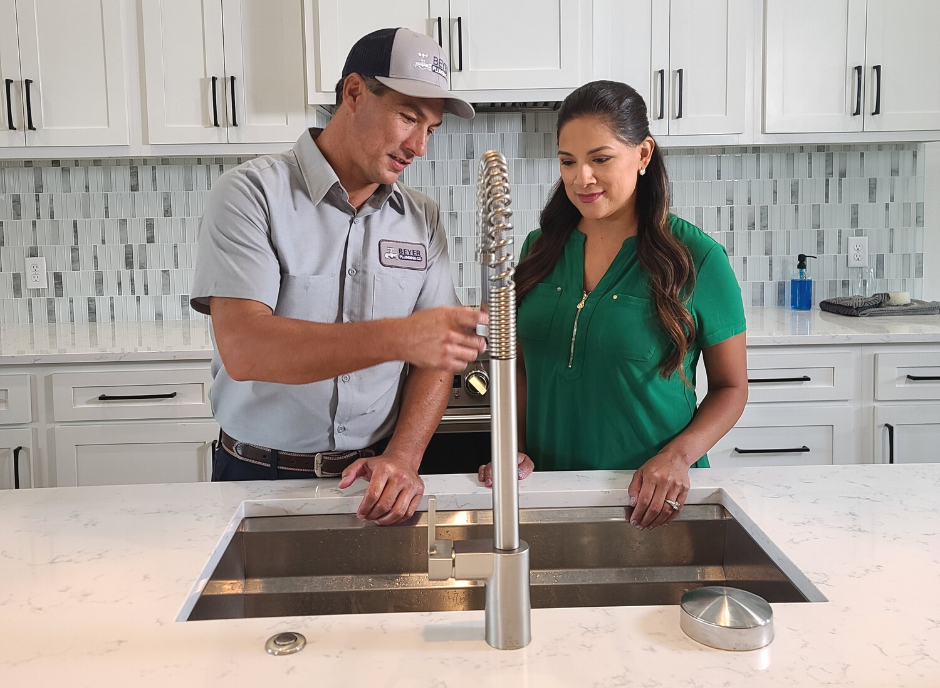The author is making a number of good observations about How to Fix a Dripping or Leaky Faucet overall in this article which follows.

Dripping taps may seem like a small inconvenience, yet their impact surpasses simply the annoyance of the audio. From drainage to incurring unnecessary financial costs and health risks, overlooking a dripping tap can bring about numerous repercussions. In this article, we'll look into why it's important to resolve this typical home issue quickly and efficiently.
Wastefulness of Water
Ecological Impact
Trickling taps add substantially to water wastefulness. According to the Epa (EPA), a solitary tap trickling at one drip per secondly can squander more than 3,000 gallons of water annually. This not just strains water resources yet also affects environments and wild animals dependent on them.
Financial Prices
Increased Water Costs
Past the environmental influence, dripping faucets can inflate water bills substantially. The built up wastefulness over time translates right into greater utility expenditures, which might have been stayed clear of with prompt repairs.
Prospective Residential Or Commercial Property Damage
Additionally, prolonged dripping can bring about damage to components and surfaces bordering the tap. Water accumulation can trigger discoloration, rust, and also architectural issues if left unattended, resulting in added repair work costs.
Health and wellness Problems
Mold and Mold Development
The consistent visibility of wetness from a dripping tap develops an ideal setting for mold and mildew and mold development. These fungi not only compromise interior air quality but additionally posture health dangers, specifically for individuals with respiratory system conditions or allergies.
Waterborne Conditions
Stationary water in leaking faucets can come to be a breeding place for microorganisms and various other virus, enhancing the risk of waterborne illness. Impurities such as Legionella bacteria grow in stagnant water, potentially resulting in serious diseases when ingested or inhaled.
DIY vs. Specialist Repair work
Benefits and drawbacks of DIY Repair Work
While some may try to repair a dripping tap themselves, do it yourself repair services feature their very own set of difficulties. Without appropriate understanding and tools, DIY attempts can worsen the issue or bring about incomplete repair services, lengthening the problem.
Advantages of Working With a Professional Plumber
Hiring a specialist plumber makes sure that the underlying cause of the leaking faucet is attended to efficiently. Plumbings have the know-how and equipment to detect and fix faucet problems effectively, conserving time and decreasing the threat of more damage.
Step-by-Step Overview to Fixing a Dripping Tap
Devices Needed
Before trying to deal with a dripping faucet, collect the essential devices, consisting of an adjustable wrench, screwdrivers, replacement parts (such as washing machines or cartridges), and plumber's tape.
Typical Tap Issues and Their Solutions
Identify the sort of faucet and the details problem causing the drip. Common problems consist of damaged washers, corroded valve seats, or damaged O-rings. Refer to maker instructions or online tutorials for step-by-step advice on repair work.
Preventive Measures
Regular Maintenance Tips
To stop leaking faucets, do routine maintenance such as cleaning up aerators, evaluating for leakages, and replacing damaged components without delay. Additionally, think about mounting water-saving tools or upgrading to more efficient fixtures.
Relevance of Prompt Fixes
Addressing dripping faucets as soon as they're noticed prevents more water wastage and prospective damage, eventually saving both water and cash over time.
Effect On Property Worth
Assumption of Well-Maintained Building
Preserving a home in good condition, consisting of dealing with upkeep concerns like leaking faucets, improves its perceived worth and worth amongst prospective purchasers or tenants.
Impact on Resale Worth
Properties with well-maintained plumbing fixtures, including taps, command greater resale worths in the property market. Resolving trickling taps can add to a favorable impact during home inspections and negotiations.
Ecological Responsibility
Specific Payment to Conservation
Taking obligation for fixing leaking faucets straightens with broader initiatives toward water conservation and ecological sustainability. Every individual's activities collectively make a significant impact on protecting priceless resources.
Lasting Living Practices
By prioritizing timely repair services and adopting water-saving routines, people contribute to sustainable living methods that benefit both existing and future generations.
Verdict
Resolving a dripping tap goes beyond mere comfort; it's a necessary action towards saving water, decreasing monetary expenses, and safeguarding wellness and property. Whether through DIY fixings or specialist assistance, taking action to fix trickling taps is a tiny yet impactful way to promote liable stewardship of resources and contribute to a healthier, extra sustainable future.
How to Fix a Leaky Faucet: Step-by-Step Repair Guide
A leaky faucet may seem like a simple annoyance, but if it's not fixed promptly, that leak could cost hundreds to potentially thousands. From water damage to mold, mildew, and high water bills, even a tiny leak can be catastrophic if left unattended. Damage like this can even affect the overall value of your home, so it's important to take the right approach for leaky faucet repair. You may need the help of a plumber in some cases, but we've got a few tips you can try on how to fix a leaky faucet before calling the pros.
Four Faucet Types
When you're learning how to fix a leaky faucet, the first step is knowing what kind of faucet you're working with! There are four common types.
Cartridge Faucets
Cartridge faucets come in one- or two-handled varieties. In one-handled cartridge faucets, hot and cold water combines in a single cartridge. In the two-handled versions, hot and cold water are controlled separately and mixed in the faucet.
Ball Faucets
Ball faucets have a single lever you push up and down to adjust the pressure and rotate to change the temperature. A slotted metal ball controls the amount of water allowed into the spout.
Compression Washer Faucets
They're the oldest type of faucet, but they're still used in many homes — especially older ones. Compression faucets have two separate handles that, when turned, raise or lower the washer that seals a water valve. This valve stops water from flowing through the faucet when it is turned off.
Disc Faucets
Disc faucets rarely need to be repaired due to their maintenance-free design. The water flow is controlled by two discs — the upper one raises and lowers against a fixed lower disc, creating a watertight seal. If your disc faucet starts leaking, you may need to replace the seals or clean residue buildup from the inlets.
Fixing a Leaky Faucet
Step 1: Turn Off the Water
Whether you're learning how to fix a leaky bathtub faucet or how to fix a leaky kitchen faucet, always turn off the water supply to your working area when you're fixing a leak. The last thing you want is a flood added to your list of things to fix.
Look for the shutoff valves below your sink or around the tub and turn them clockwise to stop the water flow. If your faucet doesn't have shutoff valves, you may need to turn off the water for the whole house. Check to make sure it's off by turning the faucet on. If nothing comes out, you're ready to start the repair.
Step 2: Take Apart the Faucet
How you disassemble your faucet depends on the type of fixture you have. You can use a flathead screwdriver to remove the caps on top of the handle or handles for cartridge and compression faucets. Inside, you should see handle screws. Unscrew these with a screwdriver to remove the handle.
Disc- and ball-style faucets will typically have an inlet screw near the handle, and removing that will reveal the interior of the faucet.
Detach the Valve Stem
For cartridge- and compression-style faucets, you'll see the inner valve stem or cartridge once you remove the faucet handles. If you have a compression faucet, unscrew the brass valve stem. If you have a cartridge faucet, pull out the cartridge. If your cartridge has been in place for a while, it may require some tools or extra force to remove it due to mineral deposits.
Examine and Replace Parts
Once you've removed the parts, check them out to confirm what needs to be replaced. You may see corroded rubber washers, O-rings, stems, or cartridges. On a ball-style faucet, check the seats and springs for damage.
If you need to repair a leaky disc faucet, check the inlet and seals on the lower disc.
Once you determine what parts must be replaced, visit your local hardware store. Bring the damaged parts with you to ensure you can purchase the correct components to replace them.
Clean Valves and Faucet Cavity
If you've removed a stem or cartridge, you may notice mineral buildup in the faucet's threads. Use white vinegar to clean the valve seat by soaking it for a few minutes, then scrub it away with a soft toothbrush and rinse with warm water. You can also clean the interior of the faucet in the same way.
Reassemble the Faucet
Once your faucet is cleaned and the required parts have been replaced, it's time to reassemble it. Put the pieces back together and slowly turn the water supply back on. Doing this slowly is crucial because too much initial water pressure can damage the new hardware you've just installed.
https://homewarranty.firstam.com/blog/how-to-fix-leaky-faucet

I was made aware of that write-up on Should I Repair or Replace a Leaky Faucet? from an associate on a different domain. Enjoyed our blog? Please share it. Help another person locate it. Thanks for your time. Revisit us soon.